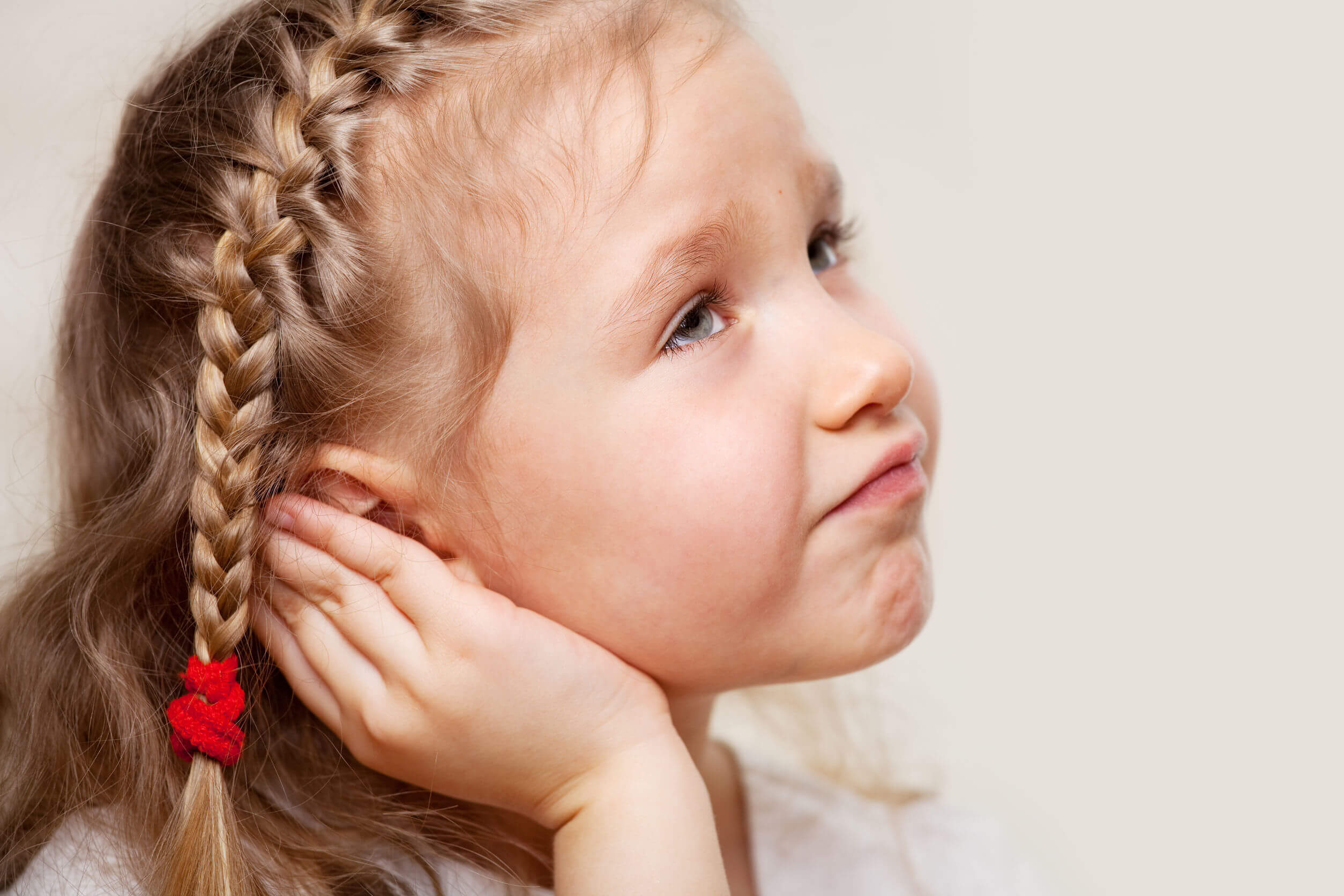The 3 Most Common Ear Diseases

The ear is one of the most sensitive organs in the body, because it’s involved not only in hearing, but also in balance. Diseases and infections that affect this organ are unpleasant and can make it difficult to carry out our daily activities. We’ll now give you a brief guide to the 3 most common ear diseases.
This organ is made up of 3 very different parts, which fulfill specific functions that all complement each other. First of all, we have the external ear, which is made up of the pinna and the auditory canal that is in charge of directing the sound waves towards the deeper areas.
The middle ear is made up of the tympanic membrane and different ossicles, which transmit sound waves to the inner ear. Lastly, the inner ear is made up of a membranous and a bony area. The first is involved in maintaining balance, while the second is involved in the interpretation of acoustic waves.
The 3 most common ear diseases
The diseases and infections mentioned below aren’t a medical emergency, as they aren’t life-threatening. However, special care must be taken with them, as they produce a large number of symptoms that can become disabling.
The 3 most common ear conditions are the following:
Otitis
Otitis is a bacterial or viral infection that can affect both the middle ear and the outer ear. This is a very common pathology in childhood, in fact, some studies show that 80% of children have had at least one ear infection before reaching the age of 6.
One of the most frequent diagnoses is otitis media, which can be acute or chronic depending on the time of evolution.
Otitis is one of the major causes of antibiotic prescription worldwide.
Symptoms
The most characteristic symptom of this disease is earache, with variable intensity. It tends to cause irritability in young children, which is why they’re prone to crying uncontrollably. On the other hand, affected patients may also have any of the following symptoms:
- Tinnitus or buzzing
- Expulsion of purulent fluid
- Vertigo
- Fever
- Hearing loss

Treatment
Pharmacological treatment is aimed at eliminating the bacteria that are causing the problem and reducing pain. In this sense, the most effective drug is amoxicillin combined with an analgesic such as acetaminophen to reduce fever and pain.
In some cases of otitis media, it’s necessary to perform minor surgery in order to drain the fluid contained in the middle ear. To do this, the specialist will make an incision in the tympanic membrane and insert a small tube through which the purulent fluid will come out.
Otosclerosis
This is a disease that affects young adults, and is one of the main causes of hearing loss within this age group. It is estimated to affect between 0.2% and 1% of the world population, however, the number may be higher, as the initial phase is asymptomatic.
The ossicles of the middle ear are made up of a loose and vascularized tissue, which makes them very mobile. In otosclerosis, this tissue is replaced by a denser and less vascularized one. This change causes the bones to lose mobility, causing physical problems.
Symptoms
One of the characteristic symptoms of otosclerosis is hearing loss, which often occurs in some of the most common ear diseases. During the initial phase, people may notice a hum or non-existent noise.
This symptomatology will progress over time until the hearing loss is evident. In most cases, it starts only in one ear, however, it tends to eventually affect both. The problem with hearing will be gradual, and so, initially, there’ll only be problems with low sounds.
Some people may also experience unexplained dizziness and problems with balance. In addition, noisy environments can cause confusion and momentary deafness.
Treatment
The use of hearing aids helps to improve deafness during its initial phase, however, the problem will progress and it will be necessary to use increasingly more powerful hearing aids. Although the use of these devices won’t cure deafness, they’re able to reduce its impact on quality of life.
On the other hand, there are 2 surgical procedures that can eliminate the problem. The first consists of removing a portion of the affected bone, which will improve its mobility. With the second, it’s possible to remove all the affected bone and replace it with a prosthesis.
Ménière’s disease
The last pathology on our list of the most common ear diseases is Ménière’s disease. It’s characterized by the excessive accumulation of endolymphatic fluid in a part of the inner ear called the membranous labyrinth.
This disease can affect individuals of all ages, however, it is most commonly found in people between the ages of 40 and 60, with around 45,500 new cases diagnosed each year. The membranous labyrinth participates in maintaining balance and postural control, which is why alterations in psychomotor skills may occur.
Symptoms
The most characteristic symptom of Ménière’s disease is vertigo, which can be defined as the sensation that objects around you are moving, or that you are moving around them.
This disease is one of the main causes of peripheral vertigo, and so it’s a diagnosis that shouldn’t be ruled out. The pathology in question usually affects only one ear in most cases. In addition, patients may suffer from any of the following symptoms:
- Tinnitus or buzzing
- Hearing loss
- A feeling of having a full or congested ear

Treatment
Fortunately, Ménière’s disease can be treated to lessen the impact of symptoms. Treatment with medications such as diazepam, meclizine, and glycopyrrolate can help to decrease vertigo, the most disabling symptom.
Some lifestyle changes (such as cutting down on salt, caffeine, alcohol, and tobacco) can help improve the condition. Surgery is usually used when all other methods fail, its goal being to decrease the fluid found within the endolymphatic sac.
Other common ear diseases
There are other conditions that can affect the ear, creating very annoying symptoms such as excess earwax and damage to the ear canal. All these conditions can be solved quickly by an otolaryngologist, and so it’s always advisable to visit a specialist.
The most common ear diseases can be very uncomfortable, however, all of them can improve with proper treatment. However, some conditions can cause long-term deafness, and so it’s important that you go to see a doctor if you notice you have a problem.
The ear is one of the most sensitive organs in the body, because it’s involved not only in hearing, but also in balance. Diseases and infections that affect this organ are unpleasant and can make it difficult to carry out our daily activities. We’ll now give you a brief guide to the 3 most common ear diseases.
This organ is made up of 3 very different parts, which fulfill specific functions that all complement each other. First of all, we have the external ear, which is made up of the pinna and the auditory canal that is in charge of directing the sound waves towards the deeper areas.
The middle ear is made up of the tympanic membrane and different ossicles, which transmit sound waves to the inner ear. Lastly, the inner ear is made up of a membranous and a bony area. The first is involved in maintaining balance, while the second is involved in the interpretation of acoustic waves.
The 3 most common ear diseases
The diseases and infections mentioned below aren’t a medical emergency, as they aren’t life-threatening. However, special care must be taken with them, as they produce a large number of symptoms that can become disabling.
The 3 most common ear conditions are the following:
Otitis
Otitis is a bacterial or viral infection that can affect both the middle ear and the outer ear. This is a very common pathology in childhood, in fact, some studies show that 80% of children have had at least one ear infection before reaching the age of 6.
One of the most frequent diagnoses is otitis media, which can be acute or chronic depending on the time of evolution.
Otitis is one of the major causes of antibiotic prescription worldwide.
Symptoms
The most characteristic symptom of this disease is earache, with variable intensity. It tends to cause irritability in young children, which is why they’re prone to crying uncontrollably. On the other hand, affected patients may also have any of the following symptoms:
- Tinnitus or buzzing
- Expulsion of purulent fluid
- Vertigo
- Fever
- Hearing loss

Treatment
Pharmacological treatment is aimed at eliminating the bacteria that are causing the problem and reducing pain. In this sense, the most effective drug is amoxicillin combined with an analgesic such as acetaminophen to reduce fever and pain.
In some cases of otitis media, it’s necessary to perform minor surgery in order to drain the fluid contained in the middle ear. To do this, the specialist will make an incision in the tympanic membrane and insert a small tube through which the purulent fluid will come out.
Otosclerosis
This is a disease that affects young adults, and is one of the main causes of hearing loss within this age group. It is estimated to affect between 0.2% and 1% of the world population, however, the number may be higher, as the initial phase is asymptomatic.
The ossicles of the middle ear are made up of a loose and vascularized tissue, which makes them very mobile. In otosclerosis, this tissue is replaced by a denser and less vascularized one. This change causes the bones to lose mobility, causing physical problems.
Symptoms
One of the characteristic symptoms of otosclerosis is hearing loss, which often occurs in some of the most common ear diseases. During the initial phase, people may notice a hum or non-existent noise.
This symptomatology will progress over time until the hearing loss is evident. In most cases, it starts only in one ear, however, it tends to eventually affect both. The problem with hearing will be gradual, and so, initially, there’ll only be problems with low sounds.
Some people may also experience unexplained dizziness and problems with balance. In addition, noisy environments can cause confusion and momentary deafness.
Treatment
The use of hearing aids helps to improve deafness during its initial phase, however, the problem will progress and it will be necessary to use increasingly more powerful hearing aids. Although the use of these devices won’t cure deafness, they’re able to reduce its impact on quality of life.
On the other hand, there are 2 surgical procedures that can eliminate the problem. The first consists of removing a portion of the affected bone, which will improve its mobility. With the second, it’s possible to remove all the affected bone and replace it with a prosthesis.
Ménière’s disease
The last pathology on our list of the most common ear diseases is Ménière’s disease. It’s characterized by the excessive accumulation of endolymphatic fluid in a part of the inner ear called the membranous labyrinth.
This disease can affect individuals of all ages, however, it is most commonly found in people between the ages of 40 and 60, with around 45,500 new cases diagnosed each year. The membranous labyrinth participates in maintaining balance and postural control, which is why alterations in psychomotor skills may occur.
Symptoms
The most characteristic symptom of Ménière’s disease is vertigo, which can be defined as the sensation that objects around you are moving, or that you are moving around them.
This disease is one of the main causes of peripheral vertigo, and so it’s a diagnosis that shouldn’t be ruled out. The pathology in question usually affects only one ear in most cases. In addition, patients may suffer from any of the following symptoms:
- Tinnitus or buzzing
- Hearing loss
- A feeling of having a full or congested ear

Treatment
Fortunately, Ménière’s disease can be treated to lessen the impact of symptoms. Treatment with medications such as diazepam, meclizine, and glycopyrrolate can help to decrease vertigo, the most disabling symptom.
Some lifestyle changes (such as cutting down on salt, caffeine, alcohol, and tobacco) can help improve the condition. Surgery is usually used when all other methods fail, its goal being to decrease the fluid found within the endolymphatic sac.
Other common ear diseases
There are other conditions that can affect the ear, creating very annoying symptoms such as excess earwax and damage to the ear canal. All these conditions can be solved quickly by an otolaryngologist, and so it’s always advisable to visit a specialist.
The most common ear diseases can be very uncomfortable, however, all of them can improve with proper treatment. However, some conditions can cause long-term deafness, and so it’s important that you go to see a doctor if you notice you have a problem.
- Gimenez Serrano S. Afecciones comunes del oído. Farmacia Profesional. 2005; 19 (7): 40-45.
- López-Escamez J. Papel de la medicina genómica en las enfermedades del oído medio e interno. Acta Otorrinolaringológica Española. 2012;63(6):470-479.
- Emmett SD, Kokesh J, Kaylie D. Chronic Ear Disease. Med Clin North Am. 2018 Nov;102(6):1063-1079.
- Pérez Alcázar M. Otitis. Tratamiento de la infección. Farmacia profesional. 2002; 15 (5): 44-49.
- Salvador Casas J, Rodríguez D, Miranda G, de Grazia J. Otoesclerosis: revisión de aspectos etiopatogénicos, clínico-demográficos e imagenológicos. Revista Chilena de Radiología. 2016; 22 (3): 108-113.
- Pérez López L, Belinchón de Diego A, Bermell Carrión A, Pérez Garrigues H, Morera Pérez C. Enfermedad de Ménière y migraña. Acta Otorrinolaringológica Española. 2006;57(3):126-129.
Este texto se ofrece únicamente con propósitos informativos y no reemplaza la consulta con un profesional. Ante dudas, consulta a tu especialista.







